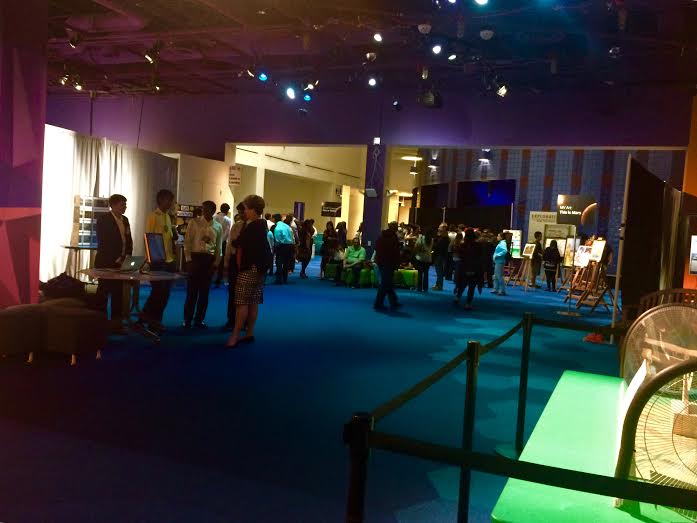Footage taken by Itay Barylka and video edited by Chetana Ramaiyer
On Tues. May 24, the Tech Museum in San Jose brought together different subject areas all across the board, as Drama, Art, Journalism, AP Environmental Science, AP Chemistry and AP US History came together for The Martian: Deconstructed event.

The Martian: Deconstructed was a night to celebrate space exploration, watch student presentations, and deconstruct scientific inaccuracies featured in the movie — the event opened up with the Drama Department creating an abridged reenactment of the movie, followed by a panel of NASA scientists to answer people’s questions about the STEM industry. AP Chemistry and Environmental Science students examined the movie The Martian using scientific evidence to prove what scenes were fact, and which were fiction. From journalism, seniors Alina Abidi and Malini Ramaiyer asked NASA scientist questions about the STEM industry and juniors Avni Prasad and Shriya Deshpande presented film critic in relation to The Martian. Art classes created different pieces of artwork that represented different aspects of space, and AP US History classes, in tackling the male dominated field that is aerospace engineering, focused their presentations on women in space.
When AP Chemistry teacher Kavita Gupta first thought up of the event, she never expected it to snowball into the project it became. She is very proud of what The Martian: Deconstructed has evolved into and feels it showcases a great blend of multiple disciplines.
“Whether you’ve seen the movie or not, or whether you are interested in science or not, it just grasps you,” Gupta said. “The beauty of the movie is that it talks to so many. Our space program is always been a source of pride, and what we look up to, so it talks to many people and it makes science accessible to other people.”
Click through to see more indepth stories on APUSH, AP Chemistry, APES, and Art presentations from The Martian: Deconstructed!
In the end, The Martian, according to Gupta, was a show of how different disciplinaries could come together. It was a combination of arts, of drama, of science, and it all came together to showcase a love of space and the unknown.
“Over my years of teaching I’ve really come to value learning of skills all over the continent,” Gupta said. “Skills like analyzing, critical thinking, problem solving, research — it is very valuable for students to see that overlap because then they know they can take their skills and apply it to different subject areas. You don’t necessarily know the content, but if you have critical thinking skills you can take a paragraph from any subject area and understand it.”
CORRECTION: Teacher Mary Murphey’s name is spelled incorrectly in the video. Her last name should be spelled “Murphey,” not Murphy.


















